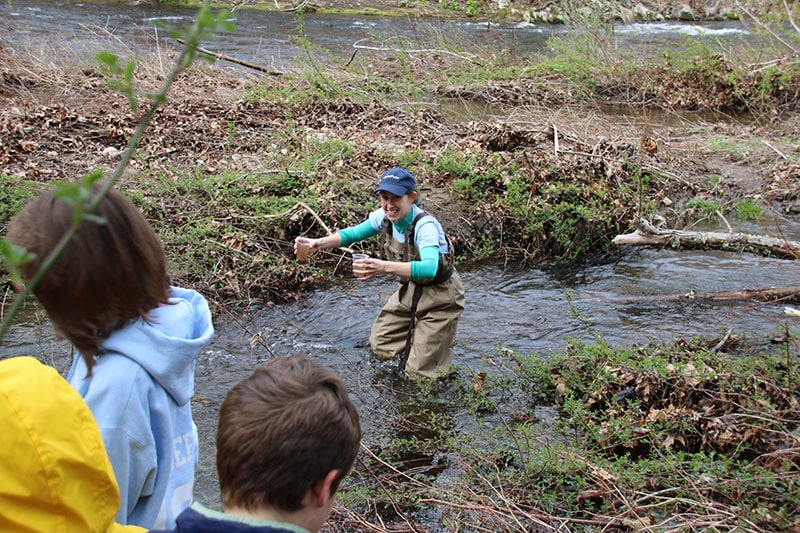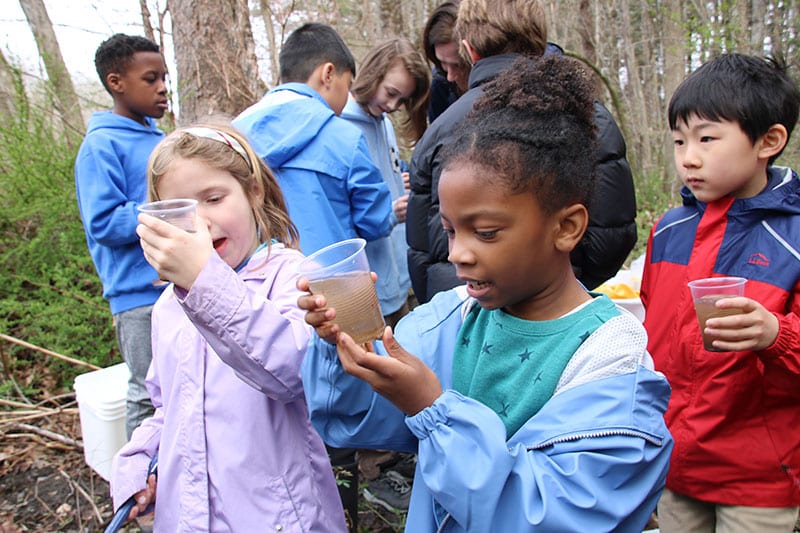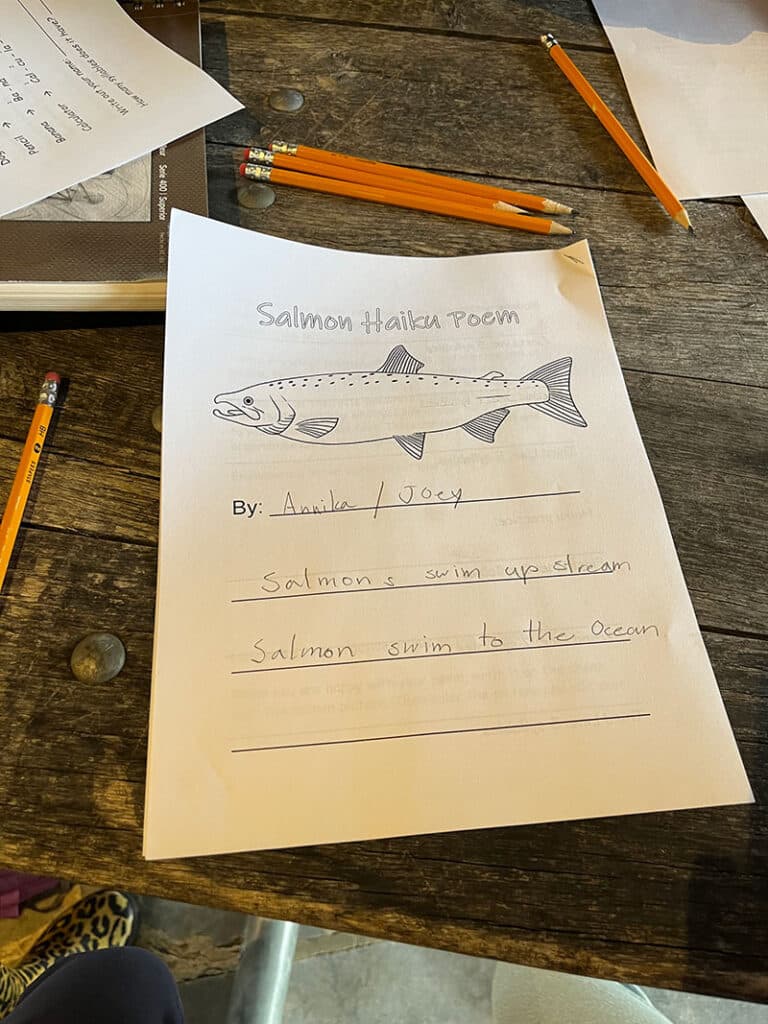Salmon Stocking Project

Renbrook’s Grade 5 Science Program actively participates in the Connecticut River Salmon Association Salmon-in-Schools Program. This valuable scientific and environmental learning project is enjoyed by children in schools across Connecticut. Students participate actively in all program phases, from rearing salmon eggs in the classroom to stocking rivers, and Renbrook is thrilled to be a part of it.
The Plight of Salmon
Wild salmon have occupied Earth’s rivers and oceans for millions of years. For countless generations, they have sustained human communities and cultures worldwide. However, climate change and unsustainable development now threaten the very existence of these resilient species and the massive benefits they provide to people and ecosystems.
Atlantic salmon begin their lives in freshwater, and after 1-3 years, the young fish travel to sea to feed and grow before returning to their natal spawning grounds 1-3 years later to lay the eggs that will make up the next generation. While returning to their natal rivers, they struggle against several issues that people have created: poor water quality, low water quantity, warming water, and manmade barriers such as dams—all serious threats to their survival.
Hands-On Learning
Upper School STEAM teacher Olivia Goodrich is passionate about making a difference and helping our students become conscientious advocates of our environment. Students engage in hands-on learning by incubating Atlantic salmon eggs in a chilled aquarium tank from early January to mid-April or early May. These eggs hatch into alevin by mid-February. Alevin, small fish with yolk sacs as their sole food source, grow into fry by mid-April or early May, depending on temperature. At this stage, they resemble streamlined minnows. The program culminates with stocking these young salmon into a tributary of the Connecticut River, carefully coordinated by the state Department of Energy and Environmental Protection (DEEP) and the Connecticut River Salmon Association.



Stocking the River
Mrs. Goodrich and her students stocked in the Farmington River at People’s State Forest in Barkhamsted this year. Grades 2 and 5 students spent the day at the forest engaging in various activities connected to learning about salmon and then releasing their salmon right into the Farmington River. This real-world experience teaches students about salmon life cycles and ecosystems, fostering environmental stewardship and a deeper connection to their local watershed. Additionally, students learn about the historical decline of salmon populations in Connecticut rivers and the cultural relevance of salmon to Native American populations.



Beyond Scientific Knowledge
The integration of the Salmon-in-Schools Program with the fifth-grade science curriculum goes beyond scientific knowledge. It nurtures environmental consciousness, empathy, and a sense of responsibility. Students explore water as a vital resource, understanding its distribution and impact on living organisms. Investigating food chains, food webs, and the roles of producers, consumers, and decomposers becomes tangible through the salmon unit. Witnessing the release of salmon into their natural habitat during the culminating stocking process reinforces classroom learning and connects students to their local watershed. It also encourages them to return to the stocking site in the future.
By delving into the historical decline of Atlantic salmon populations and appreciating their cultural significance, students become informed stewards of our natural world, advocating for the health of living things and their environment. Renbrook School brings learning to life.